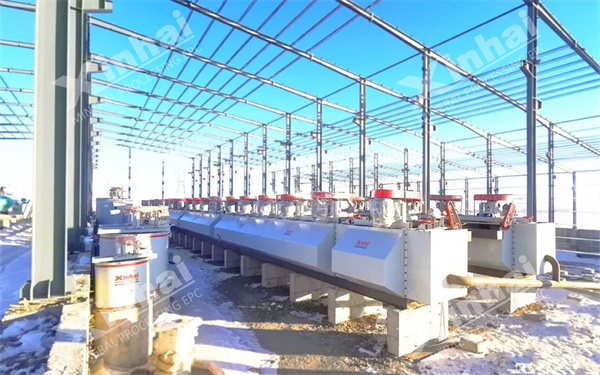In the quest to meet the ever-growing demand for lithium, spodumene has emerged as a vital source of this coveted mineral. Efficient extraction of lithium from spodumene is paramount to support the global shift towards clean energy and electric mobility. The optimisation of spodumene flotation stands as a critical process in achieving high recovery rates and producing high-grade lithium concentrates. This article delves into the complexities of spodumene flotation optimisation, exploring the key factors, methodologies, and technological advancements that contribute to the successful extraction of lithium from spodumene.

Spodumene, a pyroxene mineral, is a lithium-bearing mineral primarily found in pegmatite deposits. Its flotation involves selectively separating the valuable lithium-rich mineral from the associated gangue minerals through a froth flotation process. Successful spodumene flotation optimisation ensures the recovery of a high-grade lithium concentrate, which serves as a crucial feedstock for the production of lithium compounds.
Several factors impact the optimisation of spodumene flotation:
a. Ore Mineralogy: The mineralogical composition of the spodumene ore influences the choice and dosage of flotation reagents, as well as the overall flotation process.
b. Particle Size: The particle size distribution of the spodumene ore directly affects flotation efficiency. Fine particles may not effectively attach to air bubbles, leading to reduced recovery rates.
c. Flotation Reagents: The selection and dosing of flotation reagents, including collectors, frothers, and modifiers, significantly impact the flotation performance.
d. pH and Chemical Conditions: The pH and chemical conditions of the slurry during conditioning play a crucial role in achieving selective flotation.
e. Froth Stability: The stability of the froth layer impacts the carryability of spodumene particles to the froth for collection.
Achieving optimal spodumene flotation involves a systematic approach and the use of various methodologies:
a. Mineralogical Analysis: A comprehensive mineralogical analysis of the spodumene ore helps in understanding the mineral composition and guides the selection of suitable flotation reagents.
b. Flotation Kinetics Studies: Flotation kinetics studies assess the flotation rate of spodumene and gangue minerals, aiding in optimising flotation conditions for maximum recovery.
c. Bench-Scale Flotation Tests: Bench-scale flotation tests on representative samples provide valuable data on reagent dosages, froth stability, and other critical parameters.
d. Process Modelling: Advanced process modelling techniques help in predicting the flotation performance under different conditions, allowing for optimisation before full-scale implementation.
e. Pilot-Scale Testing: Pilot-scale flotation testing provides a scaled-up representation of the flotation process, offering insights into the operational challenges and verifying the results obtained from bench-scale tests.
Advancements in technology have played a significant role in improving spodumene flotation optimisation:
a. Automated Process Control: Advanced process control systems enable real-time monitoring and adjustment of key parameters, leading to better process stability and efficiency.
b. Flotation Sensors: The use of sensors, such as froth cameras and particle size analyzers, provides valuable data for process control and optimisation.
c. Machine Learning and Artificial Intelligence: Machine learning algorithms are being applied to optimise the flotation process by predicting the performance under varying conditions and identifying optimal parameters for improved recovery.
d. Eco-Friendly Reagents: The development of eco-friendly and sustainable flotation reagents is gaining prominence, aligning with the industry's focus on environmental responsibility.
As the mining industry embraces sustainability, environmental considerations play a vital role in spodumene flotation optimisation. Minimising the use of harmful chemicals, reducing water consumption, and adopting greener technologies contribute to a more responsible and eco-friendly flotation process.
The optimisation of spodumene flotation stands as a crucial step in the efficient extraction of lithium, a vital element in the transition to clean energy and electric mobility. By understanding the complex factors influencing spodumene flotation and leveraging advanced methodologies and technologies, the mining industry can achieve higher recovery rates and produce high-grade lithium concentrates. As the global demand for lithium continues to soar, the pursuit of spodumene flotation optimisation remains essential in supporting a sustainable and greener future.